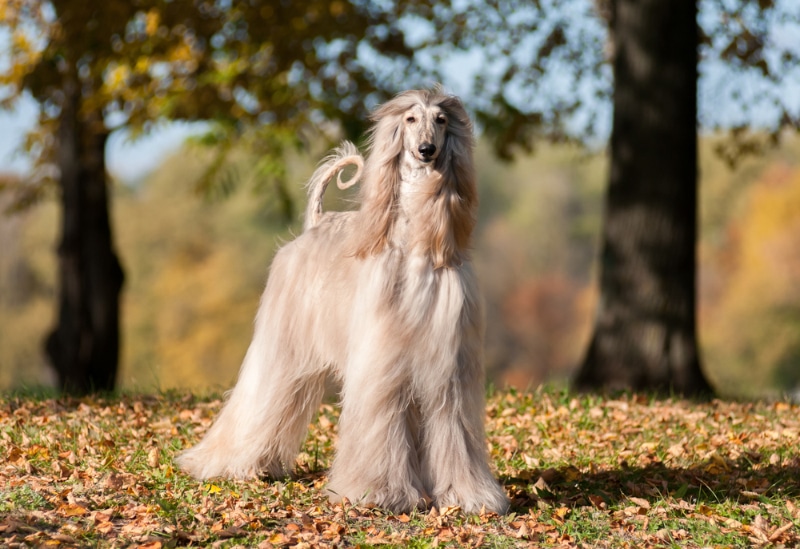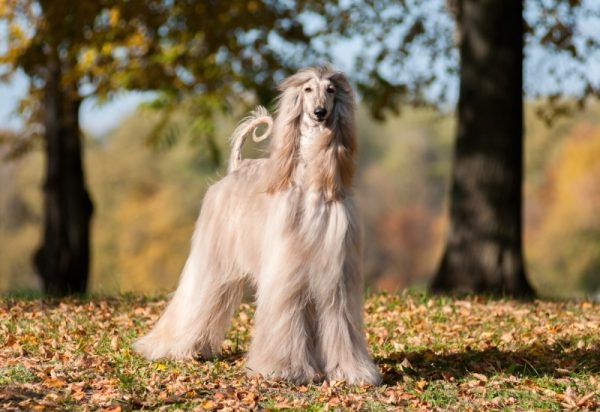Maybe you are a dog lover with allergies or simply like the idea of keeping hair out of the house. There are plenty of reasons to seek out a low-shedding dog breed, each as practical as the next, and you’ll be glad to know you aren’t short of options.
Low-shedding dogs come in all sizes and temperaments, almost ensuring you’ll find a perfect match for your home. This breakdown of these dog breeds that don’t shed will help you find out which dogs are the most likely to give you a fur-free home.
How Are Non-Shedding Dogs Classified?
Several coat types and, subsequently, numerous breeds offer minimal shedding. Dogs that keep the house clean often come with curls, silky hair, or coarse, wiry coats. Bichon types and curly-haired water dogs generally shed little. Then, you have the hairless breeds, like the Chinese Crested and American Hairless Terrier, that couldn’t shed if they wanted to!
There is no such thing as a 100% hypoallergenic dog, but there certainly are breeds that shed less hair than others, meaning that allergies may be easier to control.

The 15 Dog Breeds That Don’t Shed
1. Xoloitzcuintli
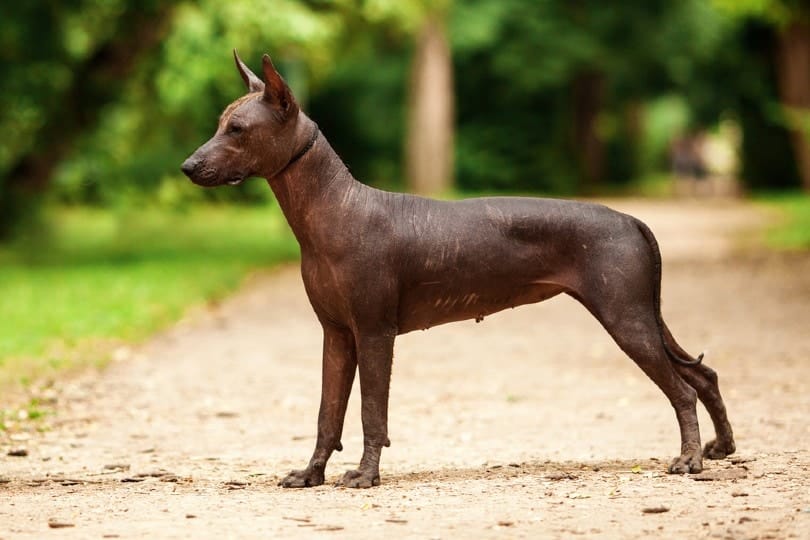
| Origin: | ~1500, Mexico |
| Lifespan: | 13–18 years |
| Height: | 10–23 inches |
With a name borrowed from the Aztec god of death, Xolotl, the Xoloitzcuintli was a revered breed in Mexican civilizations for several millennia. According to Aztec legend, Xolotl created the breed and tasked them with ferrying the dead to the afterlife.
The Xolo remains popular today, albeit without religious significance, bringing a calm, loyal demeanor to family life. The breed comes in three sizes: toy, miniature, and standard.
Some are hairless, while others have a short, manageable coat. Interestingly, hairless dogs need a copy of the recessive short-coated gene, as two copies of the hairless allele are lethal to unborn puppies.
2. Bichon Frise

| Origin: | 1200s, Canary Islands |
| Lifespan: | 14–15 years |
| Height: | 9.5–11.5 |
The Bichon Frise’s history is murky, with potential origins as far back as ancient Egypt, but many agree the dog existed in the Canary Islands before gaining popularity in Europe in the 1200s. Its popularity since then has never been in doubt. They thrived during the Renaissance as a favorite companion for nobles before becoming circus dogs and eventual show ring contenders in the 20th century.
The bichon’s low-shedding curly coat is only one of many desirable traits. The small and adaptable dogs are a delight to children, other animals, and strangers. Though they don’t have extreme exercise needs, these peppy pups are surprisingly at home in agility and obedience training.
3. Poodle
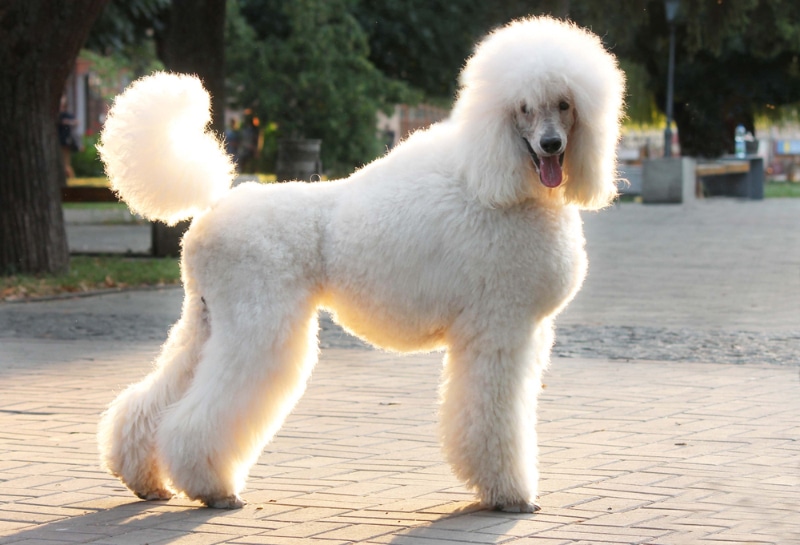
| Origin: | 1400s, Germany |
| Lifespan: | 10–18 years |
| Height: | 10–15 inches |
Despite their showy appearance, the Poodle originated as an intelligent and versatile working dog in Germany. With a name derived from “pudel”, the German word for “to splash,” the breed was originally a water retriever. Over time, the trainable dogs have found new purposes as service and therapy animals, search-and-rescue dogs, and beloved family pets.
You can’t discuss dogs that don’t shed without bringing up the Poodle. Beyond the toy, miniature, and standard varieties, the Poodle is the backbone of the doodle craze that mingles the curly-coated dog’s intelligence and hypoallergenic qualities with desirable traits from other breeds. Today, breeders raise Labradoodles, Bernedoodles, and numerous other popular mixes.
4. Yorkshire Terrier
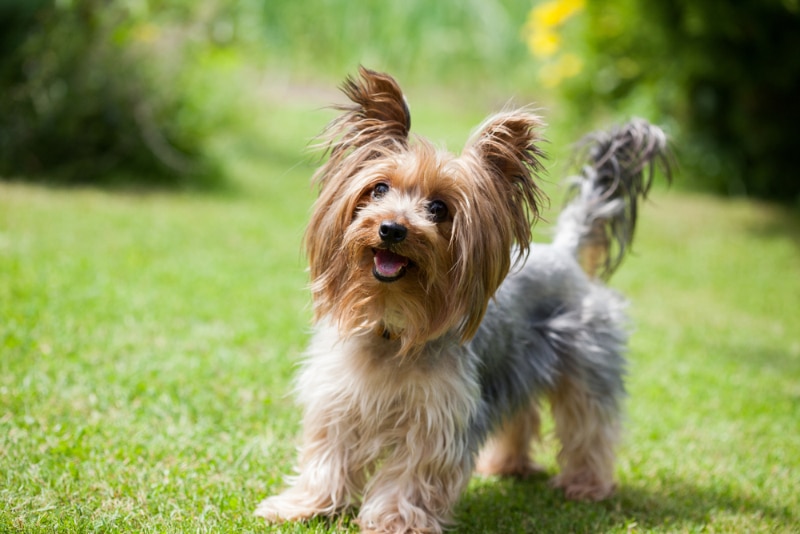
| Origin: | 1800s, England |
| Lifespan: | 11–15 years |
| Height: | 7–8 inches |
Descended from the Skye and Clydesdale Terriers of Scotland, the modern Yorkie evolved in Yorkshire, England, in the 19th century. When textile workers migrated to the area from the Scottish north, their foundational Terriers crossed with other dogs, resulting in a smaller version that became as useful for hunting vermin as offering companionship.
The luxurious, floor-sweeping, and silky coat is a hallmark of the breed, requiring plenty of upkeep despite its minimal shedding. Though dainty-looking, the Yorkie retains the sassy, bold character typical of Terrier breeds.
5. Shih Tzu
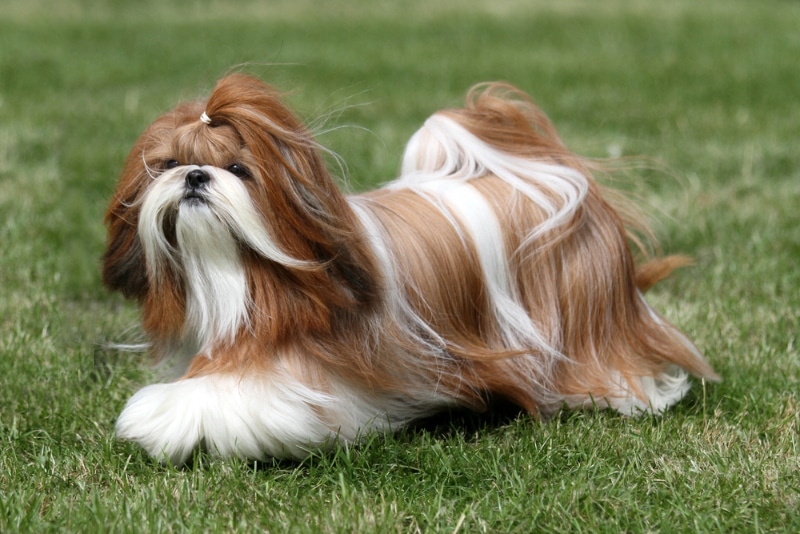
| Origin: | ~1000 A.D., Tibet |
| Lifespan: | 10–18 years |
| Height: | 9–10.5 inches |
Dating back at least 1,000 years, the Shih Tzu originated in Tibet before traveling to China, where the modern breed would take shape. The Shih Tzu name translates to “little lion” in Mandarin, a possible reference to a Buddhist legend.
Although they almost went extinct in the early 1900s following China’s Communist Revolution, a handful of survivors restored the breed. They are now one of America’s top 20 dog breeds.
The toy Shih Tzu is a fashionable accessory for celebrities and a beloved pet for families. As the perfect lapdog, the Shih Tzu fits well with a laid-back indoor lifestyle and apartment living.
6. Afghan Hound
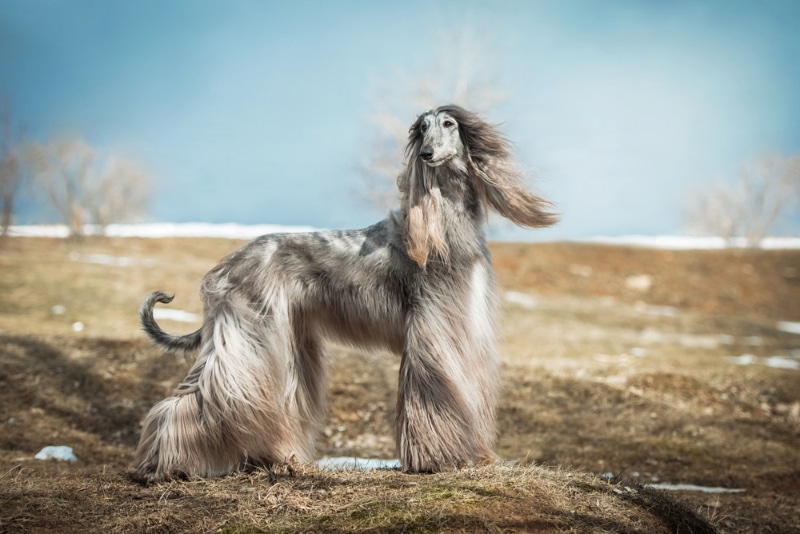
| Origin: | ~4000 B.C., Afghanistan |
| Lifespan: | 12–18 years |
| Height: | 25–27 inches |
As a dignified hunter with a Fabio haircut, the stylish Afghan Hound was more substance than style in their original Afghan mountain realm. They’re one of the oldest domestic breeds. The rugged sighthounds were long-time big game hunters across India, Afghanistan, and Pakistan.
The breed arrived in Europe with the return of military forces from India, and breeders quickly developed a standard, leading to the AKC recognition in 1926. Afghan Hounds are intelligent, dignified, and aloof. Despite the aristocratic look, Afghan Hounds are as loyal and playful as you could expect from a quality pet dog.
7. Bedlington Terrier

| Origin: | 1800s, England |
| Lifespan: | 11–16 years |
| Height: | 15–17.5 inches |
Bearing the looks of a lamb, the curly-haired Bedlington Terrier is a one-of-a-kind breed. Among other possible influences, many see sighthound traits in their speed and arched loins, the Bull Terrier with their boldness and sloping snout, and the Otterhound with their affinity for water. Blending athleticism and tenacity, the Bedlington Terrier was an efficient hunter of vermin and small game.
Unique looks match a singular personality in the Bedlington Terrier. Though wary of strangers and other dogs, they make wonderful companions and alert watchdogs with their notable loyalty, energy, charm, and, of course, low-shedding coat.
8. Basenji
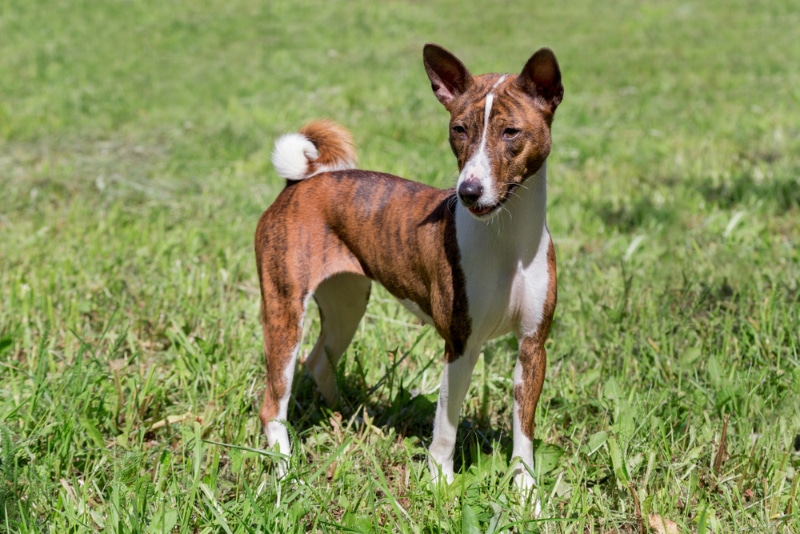
| Origin: | ~3000 B.C., Egypt |
| Lifespan: | 13–14 years |
| Height: | 16–17 inches |
The Basenji potentially originated as early as 6000 B.C. in Africa, where they lived for centuries as hound dogs. The dogs were intelligent and independent in their work, cleverly using their speed and stamina to hunt and drive game into traps.
Basenjis are unique in being minimal barkers and low shedders, leaving little evidence of their presence in the home. They’re often aloof with outsiders and challenging to train, but their sweet faces, affection toward family, and elegant frame are difficult to resist.
9. Lagotto Romagnolo
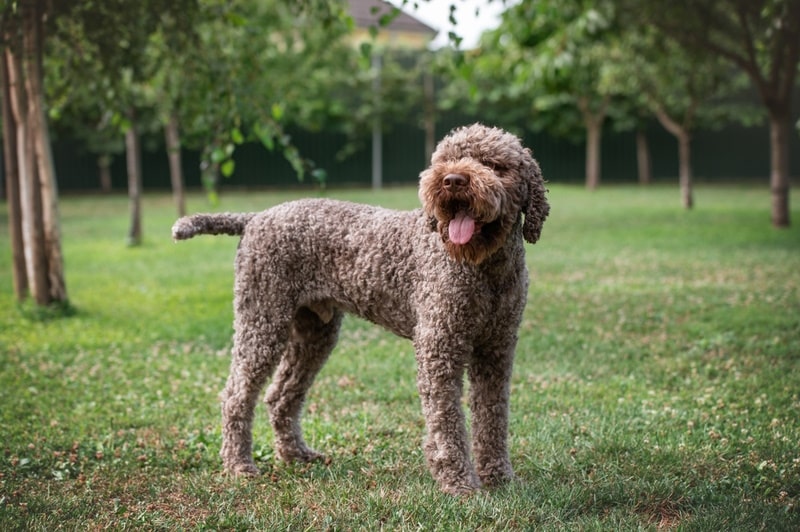
| Origin: | 1600s, Italy |
| Lifespan: | 15–17 years |
| Height: | 16–19 inches |
As a rare breed that has been rising in popularity recently, the Lagotto Romagnolo’s origins date to at least the 1600s in northeast Italy. The curly-haired water dog was a retriever in the marshy landscape, but as those roles became less needed, they transitioned to the unexpected job of truffle hunter.
Though excellent workers, the Lagotto Romagnolo’s original hunting instinct and prey drive have significantly reduced. They’re easy-going, adaptable, and trainable dogs that can light up any home with their unmatched cuteness.
10. Lhasa Apso
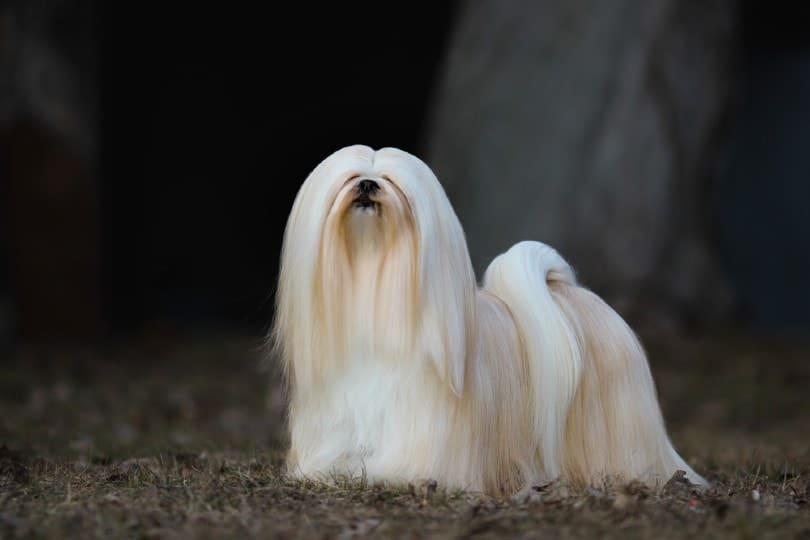
| Origin: | 800 A.D., Tibet |
| Lifespan: | 12–15 years |
| Height: | 10–11 inches |
The Lhasa Apso is an ancient breed originating in Tibet. For centuries, the little dog with a lion’s heart was a loyal companion, watchdog, and religious symbol in secluded Himalayan monasteries. When they finally made their way to the U.S. in the early 1900s, they immediately gained fame for their delightful personalities and exotic looks buoyed by the floor-sweeping, low-shedding coats.
Today’s Lhasa Apsos still retain their keen watchdog talents. They’re clever and discerning. Though wary of strangers, they can quickly learn who to trust, revealing their mischievous, fun-loving personalities to those in their circle.
11. Irish Water Spaniel
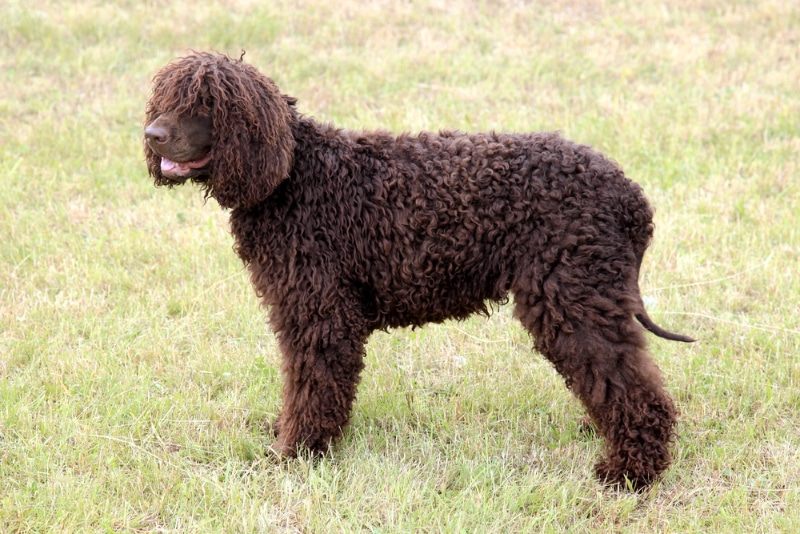
| Origin: | 1800s, Ireland |
| Lifespan: | 12–13 years |
| Height: | 21–24 inches |
The Irish Water Spaniel is unique among sporting dogs in temperament and history. Several breeds influenced the dog’s development in the early 1800s, including the Poodle, Portuguese Water Dog, and Barbet, as is apparent in their curly, watertight, and low-shedding coats.
With a notable eagerness and independence, the Irish Water Spaniel is more challenging than many Spaniels. But between their low-shedding, liver-colored coat, hard working mindset, and playfulness with their family, they can make an exceptional companion for an energetic and experienced owner.
12. Maltese
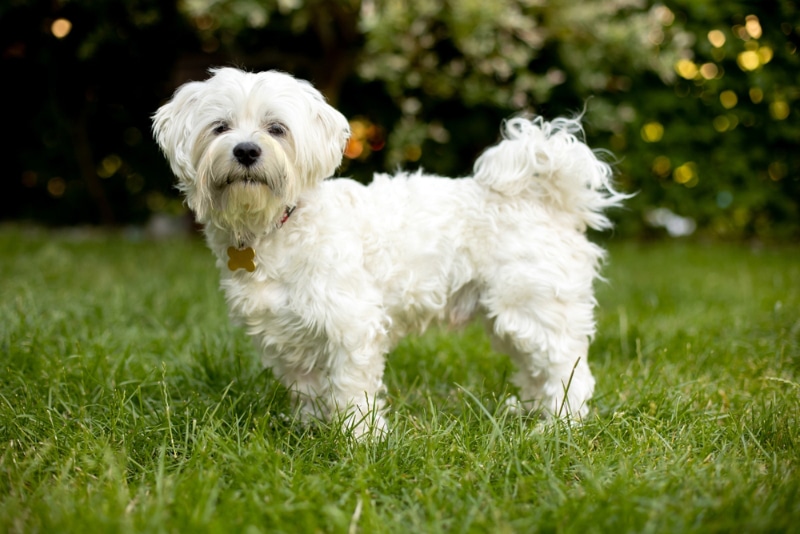
| Origin: | ~2000–1000 B.C., Malta |
| Lifespan: | 12–15 years |
| Height: | 7–9 inches |
The Maltese is an ancient breed that likely originated in Malta during the Phoenician rule preceding the Greek Empire. Like their regionally defined Bichon cousins, including the Havanese, Bolognese, and Coton de Tulear, the Maltese thrived as a companion for royals and today enjoys popularity for, among other things, their hypoallergenic qualities.
Of course, attractive looks and non-shedding hair aren’t all that made the diminutive Maltese a sought-after pet. Animated, affectionate, and undeniably charming, these elegant dogs boasted personalities as wondrous as their sparkling white coats.
13. Soft-Coated Wheaten Terrier
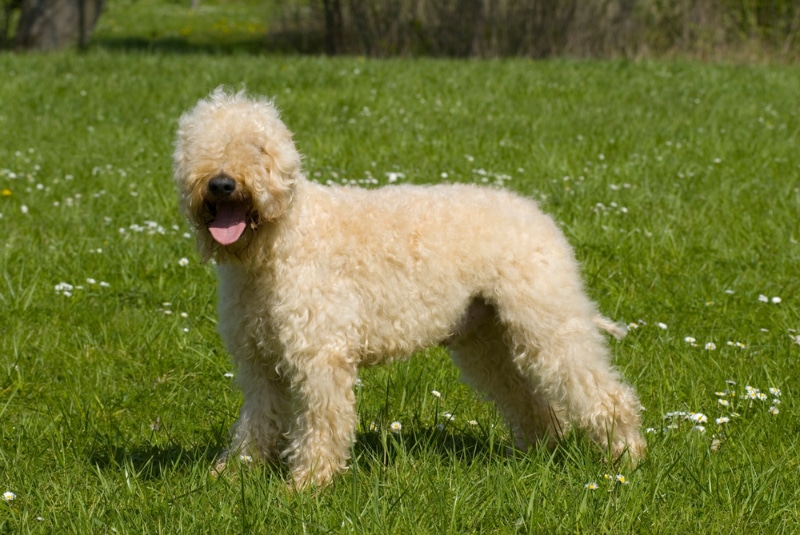
| Origin: | 1700s, Ireland |
| Lifespan: | 12–14 years |
| Height: | 17–19 inches |
The Soft-Coated Wheaten Terrier arose as a poor man’s dog in the 1700s, with breeders shaping them to sidestep restrictive ownership laws of the time. Dogs could only be a certain height and be relatively invaluable for the lower class to own them, and any dogs with tails incurred an unaffordable tax. Thus, the 19-inch tall, dock-tailed Terrier fit the bill, becoming an adept multi-purpose farm dog.
Soft-Coated Wheaten Terriers have all the independence and determination you expect from a Terrier. The low-shedding dog is nevertheless extremely loyal, upbeat, and outgoing, with a hardy personality belying their plush, gentle appearance.
14. Puli
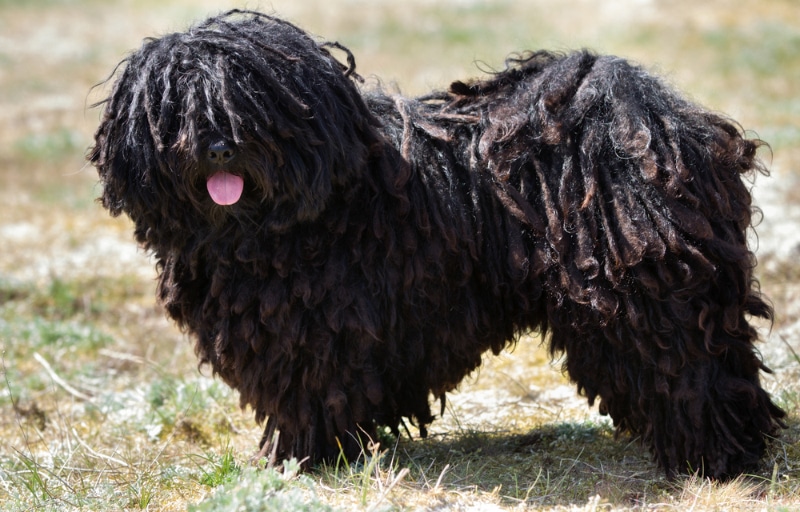
| Origin: | ~800 A.D., Hungary |
| Lifespan: | 10–15 years |
| Height: | 16–17 inches |
Breeds with non-shedding corded coats like the Puli and Komondor bear unmistakable looks, almost losing their entire bodies under endless mounds of hair and fur. The Puli has been grabbing attention for centuries in Hungary, though they gained more notoriety for their herding abilities than their intriguing appearance.
Pulik (the plural for Puli) retained the mental sharpness, athleticism, and drive that made them such desirable workers. Most families will find their silliness is the brightest side of their personality. The unique, mop-like coat doesn’t appear at birth, and though it won’t shed, it’s about as high-maintenance as you can imagine when it’s time to groom.
15. Bergamasco
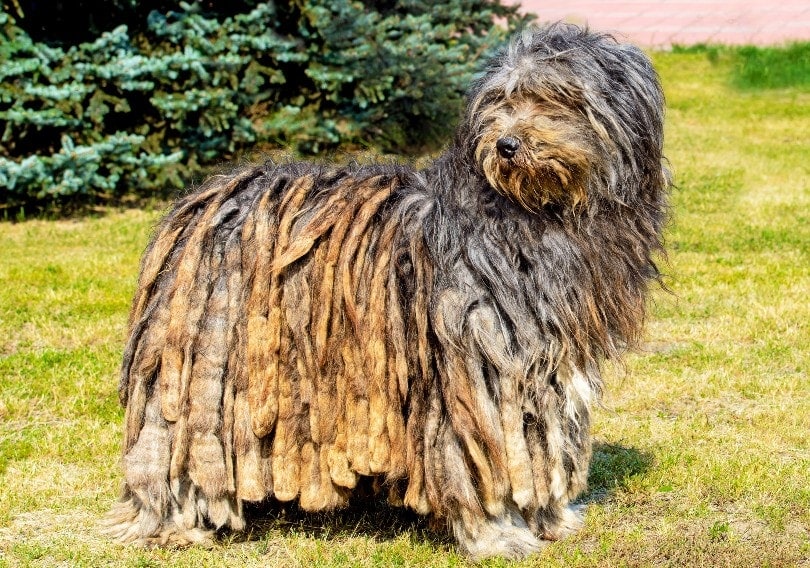
| Origin: | 1800s, Italy |
| Lifespan: | 13–15 years |
| Height: | 22–23.5 inches |
The Bergamasco is a rare, easy groomer among hypoallergenic dogs. While most dogs need constant brushing and frequent cuts, the Bergamasco’s thick blend of hair, fur, and wool is maintenance-free once it is an adult. The tricky part is when you have to shape their dread-like coat.
The chunky coat came in handy to keep the Bergamasco safe from the cold and predators while performing sheep protection duties in the Italian Alps. Although intelligent and capable of working independently, the Bergamasco is eager to please, outgoing, and patient with their family.
Do All Dogs Shed?
All dogs, including the hairless (or mostly hairless) varieties, shed hair. No breed is 100% hypoallergenic, and some studies suggest that shedding and non-shedding breeds release relatively similar levels of dog allergens. Still, the limited amount of shedding leaves minimal cleanup around the home and releases less dander into the air, making life easier for those with allergies.
Importantly, low shedding rarely means low maintenance. A hypoallergenic breed is rarely a top choice if your priorities involve minimal grooming. Although you won’t have to do much de-shedding, many hypoallergenic breeds need frequent brushing and regular groomer visits to trim back their ever-growing coats.
You won’t have hair around the home, but the cost and time involved in their upkeep is often higher than many realize.

Conclusion
Getting a dog that won’t shed can be an enormous asset in the home, but it’s hardly the only criteria to prioritize when looking for your next family pet. Non-shedding dogs come in all shapes, sizes, and personalities, leaving you little reason to compromise. With a bit of research starting with this list of dog breeds that don’t shed, you’ll have no issue finding the perfect one for your home.
Featured Image Credit: David Raihelgauz, Shutterstock
Contents
- How Are Non-Shedding Dogs Classified?
- The 15 Dog Breeds That Don’t Shed
- 1. Xoloitzcuintli
- 2. Bichon Frise
- 3. Poodle
- 4. Yorkshire Terrier
- 5. Shih Tzu
- 6. Afghan Hound
- 7. Bedlington Terrier
- 8. Basenji
- 9. Lagotto Romagnolo
- 10. Lhasa Apso
- 11. Irish Water Spaniel
- 12. Maltese
- 13. Soft-Coated Wheaten Terrier
- 14. Puli
- 15. Bergamasco
- Do All Dogs Shed?
- Conclusion

